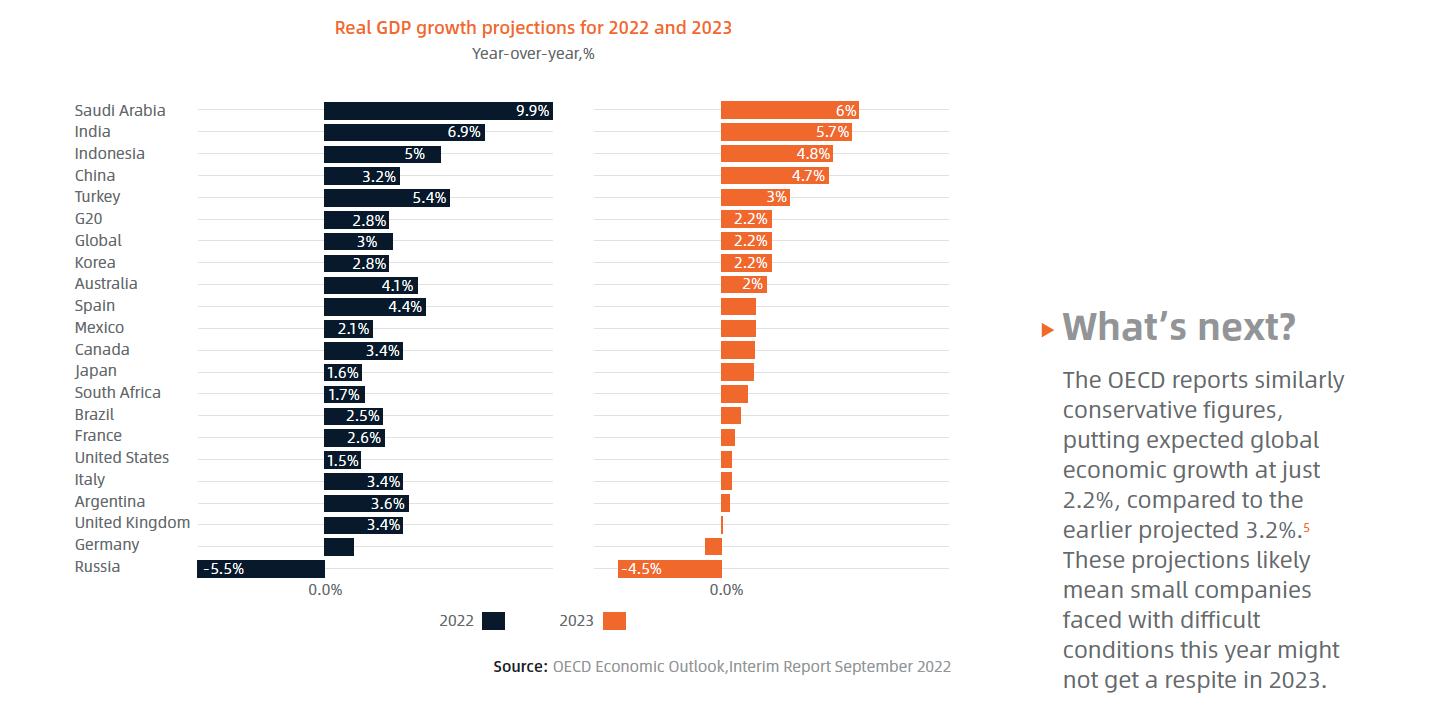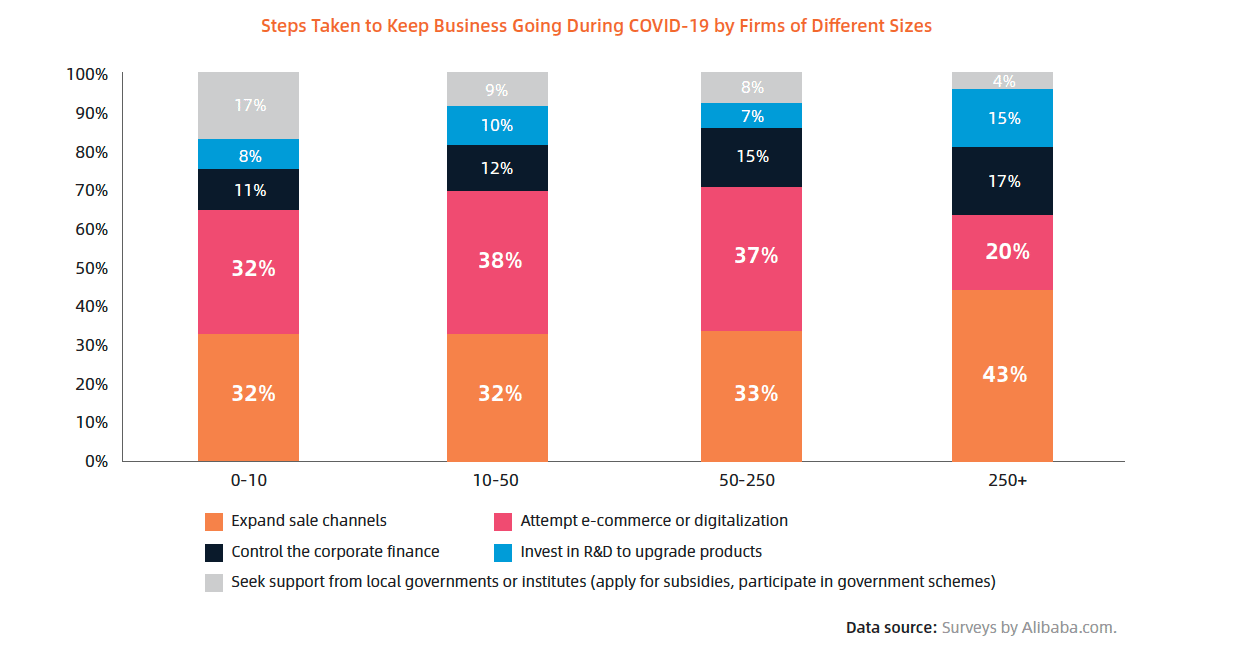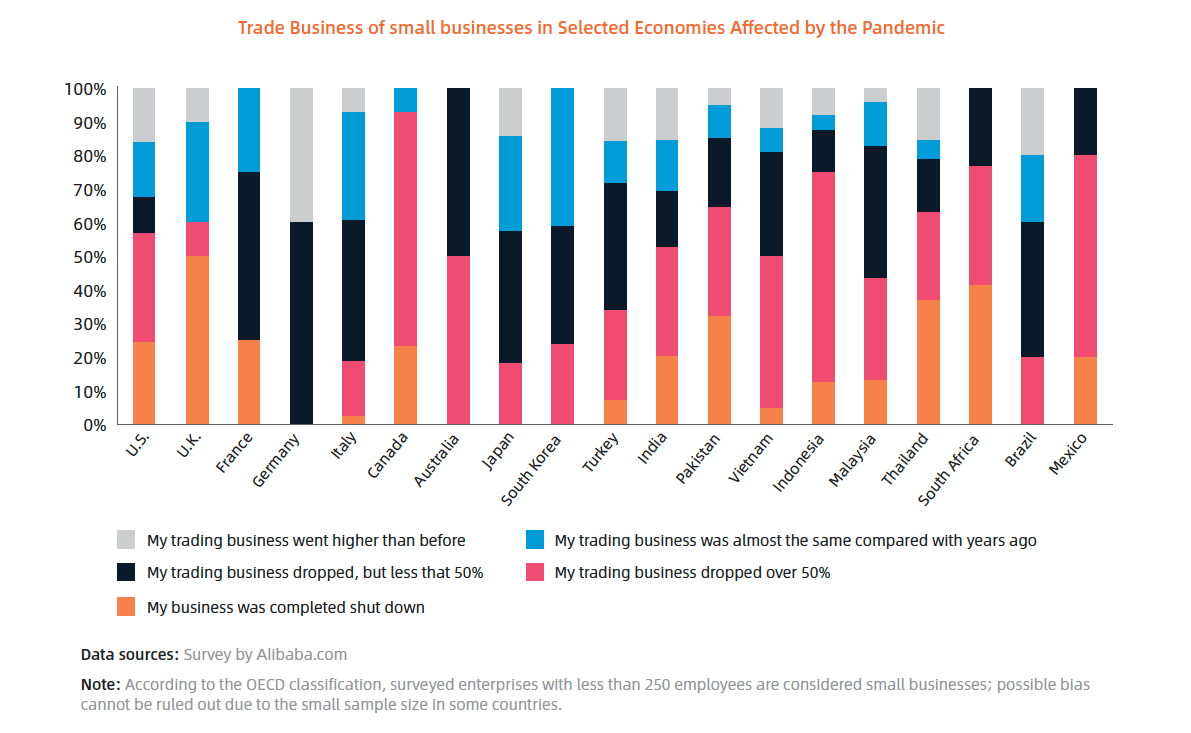A new B2B digital trends report from e-commerce marketplace Alibaba.com predicts that the coming year will see some enduring trends continue, like the rise of digital personalization and video marketing in B2B e-commerce, along with new trends in the B2B field such as real-time messaging that will also be taking shape.
To help B2B sellers prepare for 2023, The firm’s new Digital B2B Outlook 2023 report provides the predictions of Alibaba experts on the most significant trends in B2B digital exports:
Digital migration
According to data from the OECD, 70 percent of small companies surveyed said the impact of COVID-19 drove them to make greater investments in digital technologies. B2B online sellers will likely see greater competition in 2023 as businesses continue to adapt to the rising need for digitization.
Digital marketing and administration
New entrants into the B2B market will look to make a gradual entry into the digital selling space. Digital marketing will allow newcomers to gain a share of the space rapidly. There will also likely be a rise in companies using digital tools for administration purposes, such as productivity and design tools.
Data-led marketing
Widely used marketing tools have made great strides in the data-access capabilities that they offer businesses, and this will continue in 2023. Broader data access enables companies to plan, test and launch successful marketing campaigns. Companies can also apply better data to assess and learn from marketing campaigns.
Personalization
Customers want to feel seen and heard by the businesses they frequent online. This year will see upticks in customization throughout the customer purchase journey.
Time spent online
According to DataReportal, the average hours spent online daily is slightly decreasing, signaling online sellers will need to continue to battle for buyers’ attention in 2023.
Video marketing
Video marketing will continue to gain ground in 2023. While short-form videos are currently the most popular, there is scope for growth in the consumption of long-form and live-streamed videos.
Real-time messaging
Buyers are growing accustomed to rapid service across sectors, and B2B selling is no different. Consequently, sellers are implementing methods to ensure real-time or near-real-time buyer engagement such as the use of chatbots increasingly incorporated into e-commerce marketplaces.
“2022 brought significant challenges for micro, small and medium enterprises (MSMEs), brought on by volatile energy prices and soaring inflation,” said Andrew Zheng, vice president of Alibaba.com, in a news release. “Digital selling provided an opportunity for these businesses to reach customers locally and globally without stretching operating budgets, but B2B sellers must stay ahead of digital export trends in 2023 to find continued success.”
Emerging e-commerce trade exports for the U.S.
The U.S. has many significant exports, but Alibaba.com identified five of the emerging B2B e-commerce-related exports on the rise in 2023. Those include:
- Mineral Fuels (13.7 percent of total exports)
- Machinery, including computers (11.9 percent of total exports)
- Electrical Equipment (10.6 percent of total exports)
- Vehicles (7 percent of total exports)
- Medical Apparatus (6 percent of total exports)
The U.S. has begun to play a more prominent role in exporting mineral fuels and that doesn’t appear to be a trend that will change in 2023. Outside of fuels, the other industries tend to be focused on increasing exports to markets such as Canada, Mexico, Europe, China, and Japan.
Small business survey for global suppliers
In addition to its digital trends, the firm shared findings from its Small Business Survey for Global Suppliers, a survey of approximately 1000 B2B suppliers worldwide aimed at better understanding the implications of operating MSMEs throughout economic headwinds and the pandemic. Key findings included:
- Businesses with the smallest number of employees were more negatively affected by last year’s challenging market. In fact, 25 percent of survey respondents with under 10 employees shut down completely, whereas only 13 percent of respondents with over 250 employees had the same results.
- Small businesses got creative to keep sales up and survive the post pandemic pressures. Utilizing e-commerce was the top strategy for survival, with 36 percent of small businesses attempting e-commerce or digitalization throughout and directly following the pandemic. Many flocked to B2B e-commerce marketplaces and continue to utilize those resources in today’s market. In fact, 54 percent of small businesses surveyed responded that B2B e-commerce platforms remain very important to their current operations.
- To capture more sales and increase customers, about a third (32 percent) of small businesses took to expanding sales channels in order to survive the pandemic’s effects. Other tactics used included cutting expenses (13 percent), seeking support from local governments or institutions (11 percent) and investing in research and development to upgrade products (8 percent).
“Understanding how small businesses and B2B sellers have navigated the turbulence of the past few years helps us to better understand where they are going next,” said Zheng. “Sellers remain steadfast in the importance of e-commerce for their businesses and will continue evolving in 2023.”
Download the full report here.
Alibaba.com received survey responses from over 1,000 B2B suppliers, a majority of which were from 10 countries representative of all inhabited continents. This group is made up of both latent customers and in-service customers, so the past or present use of Alibaba.com was the commonality among all respondents.











